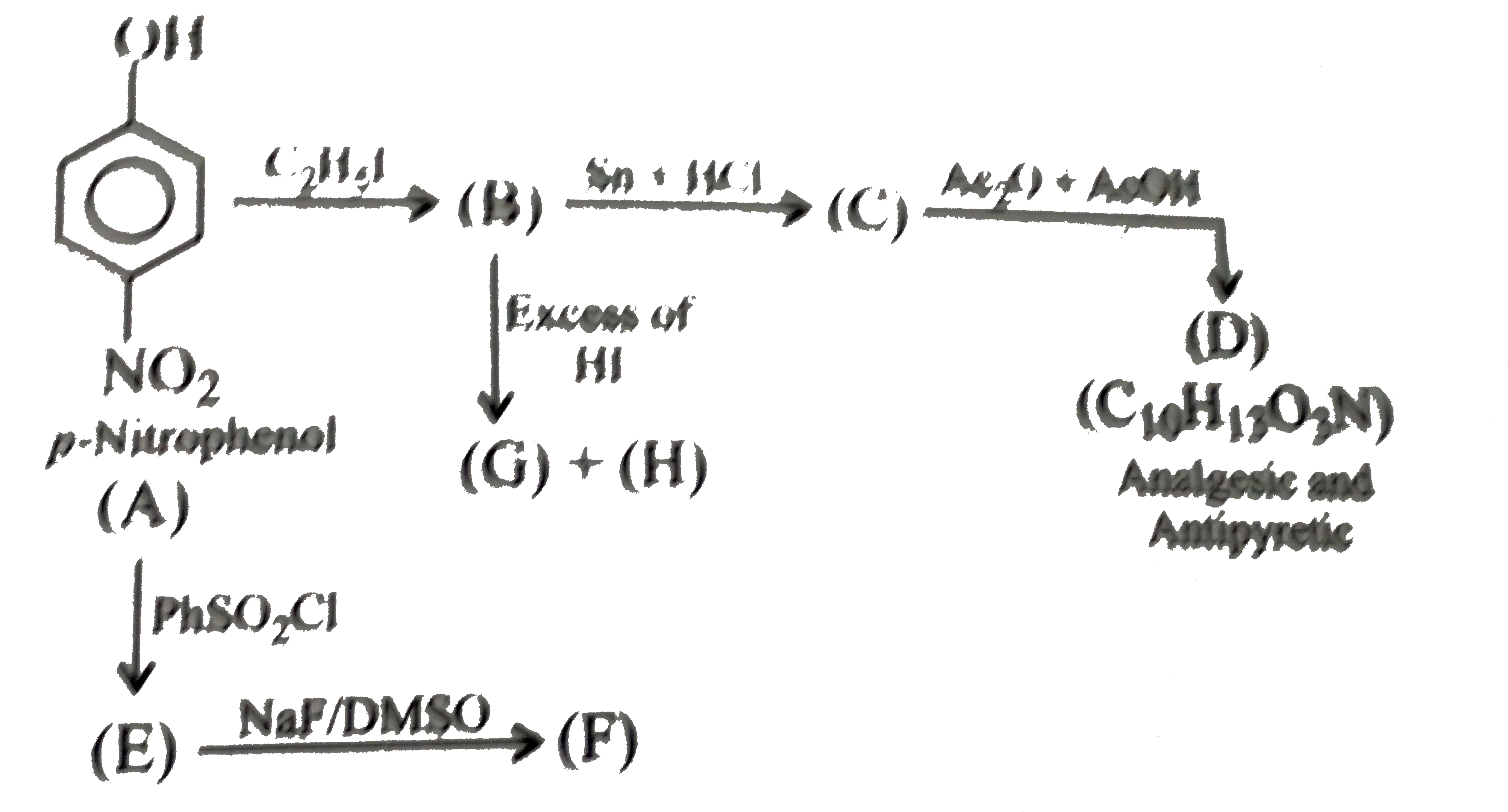In Schotten-Baumann reaction, aniline is heated with .........
Step-by-Step Solution:
1. Identify the Reactants: The Schotten-Baumann reaction involves aniline (C6H5NH2) and benzoyl chloride (C6H5COCl).
2. Understanding the Reaction Mechanism: In this reaction, the nitrogen atom in aniline has a lone pair of electrons, which makes it a nucleophile. Benzoyl chloride contains a carbonyl group (C=O) and a chlorine atom (Cl), where the carbon atom is electrophilic due to the electron-withdrawing effect of the chlorine.
3. Nucleophilic Attack: The lone pair of electrons on the nitrogen atom of aniline attacks the electrophilic carbon atom of benzoyl chloride. This forms a tetrahedral intermediate.
4. Formation of the Intermediate: The tetrahedral intermediate consists of the aniline nitrogen bonded to the carbon of benzoyl chloride, along with the chlorine atom and the oxygen atom from the carbonyl group.
5. Elimination of Chloride Ion: The intermediate collapses, leading to the elimination of the chloride ion (Cl-) as a good leaving group. This results in the formation of an amide bond.
6. Final Product: The final product of the reaction is benzamide (C6H5CONH2), which is formed by the attachment of the carbonyl group to the nitrogen atom of aniline.
Final Reaction Equation:
C6H5NH2+C6H5COCl→C6H5CONH2+HCl
C6H5NH2+C6H5COCl→C6H5CONH2+HCl
Topper's Solved these Questions
- ORGANIC COMPOUNDS CONTAINING NITROGEN BOOK - MODERN PUBLICATIONCHAPTER - ORGANIC COMPOUNDS CONTAINING NITROGEN EXERCISE - QUICK MEMORY TEST C. CHOOSE THE CORRECT ALTERNATIVE
10 Videos
- ORGANIC COMPOUNDS CONTAINING NITROGEN BOOK - MODERN PUBLICATIONCHAPTER - ORGANIC COMPOUNDS CONTAINING NITROGEN EXERCISE - REVISION EXERCISES (OBJECTIVE TYPE QUESTIONS) (MULTIPLE CHOICE QUESTIONS)
25 Videos
- ORGANIC COMPOUNDS CONTAINING NITROGEN BOOK - MODERN PUBLICATIONCHAPTER - ORGANIC COMPOUNDS CONTAINING NITROGEN EXERCISE - QUICK MEMORY TEST A. SAY TRUE OR FALSE
10 Videos
- HALOALKANES AND HALOARENESBOOK - MODERN PUBLICATIONCHAPTER - HALOALKANES AND HALOARENESEXERCISE - UNIT PRACTICE TEST
11 Videos
- POLYMERSBOOK - MODERN PUBLICATIONCHAPTER - POLYMERSEXERCISE - Competition file (OBJECTIVE TYPE QUESTIONS) (C. MULTIPLE CHOICE QUESTIONS)(Integer Type Questions)
6 Videos
Similar Questions
Knowledge Check
Schotten Baumann reaction is
APhenol + Benzoyl chloride NaOH−−−→ Phenyl benzoateBSodium phenate + methyl iodide −HCl−−−→ AnisoleCPhenol + chloroform NaOH−−−→ salicyladehydeDBenzenediazonium chloride + phenol →p− HydroxyazobenzeneSchotten Baumann reaction is
APhenol + Benzoyl chlorideNaOH−−−→Phenyl banzoateBSodium phenate + methyl iodide−HCl−−−→AnisoleCPhenol + ChloroformNaOH−−−→SalicyladehydeDBenzene diazonium chloride + Phenol→β−Hydroxyazobenzene
The schotten-Baumann reaction is:AROH+PhCOCI NaOH−−−→ ROCOPhBROHMeCOCI Py−−→ ROCOMeCROH+PhCH2COCI NaOH−−−→ ROCOCH2PhDRNH2+MeCOCI Py−−→ RNHCOMe
Write chemical reaction of aniline with benzoyl chloride and write the name of the product obtained.
View SolutionWrite chemical reaction of aniline with benzoyl chloride and write the name of the product obtained.
View SolutionReaction of aniline with benzaldehyde is
View SolutionReaction of aniline with benzaldehyde is
View SolutionBenzene diazonium chloride on reaction with aniline in the presence of dilute hydrochloric acid gives :
View Solution
